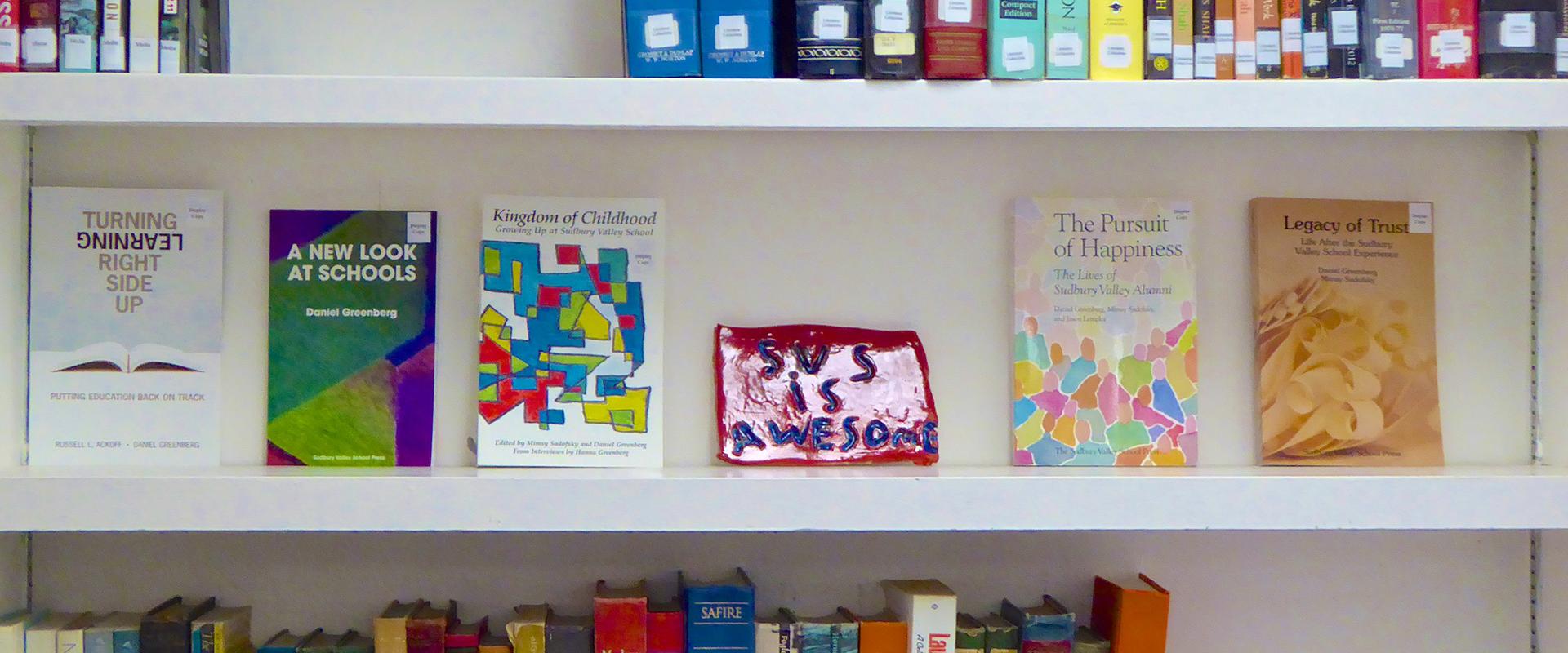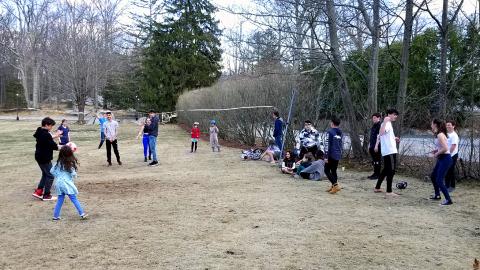People often ask if there is a problem with bullying at Sudbury Valley School given that all these kids of all different ages are mixed together in a seemingly haphazard and unordered way. I tell them that bullying is quite rare; to which they often respond, “How is that the case?”
I think the answer to that question comes down to one word… “Culture.” It is culturally unacceptable to bully here. There are a number of reasons why that is the case. In order to understand this statement, let’s first look at public schools and the culture of bullying that has persisted there. What does a system that promulgates bullying look like? How would you construct such a system?
Well, first, you would put the students into an environment where they have no say over anything: where they can be, who they can interact with, what they must do, and what they will learn. Restrict their movement and speech and subject them to top-down, authoritarian rules over which they have no say. Next, divide them by age so that a thorough examination and comparison of each can be made, and split out all those who don’t fit the “ideal model” the authorities have described. Next, put an adult in charge of their progress for a year at a time to make sure they master all the curricula in which even the adult cannot claim expertise. Lock them in a room seven hours a day, five days a week for years on end. Then, test and grade them according to government guidelines.
What could go wrong?
Also, spend hundreds of billions of dollars per year to hire more and more administrators to make more and more tweaks and demands in an attempt to fix a perpetual “educational crisis”. Believe the pleas they make that the ballooning expenditure is for the good of the children, and support their right to six-figure salaries. Have these officials pressure their subordinates to pressure the teachers to pressure the students. Put failing students into IEPs (Individual Education Programs) to correct their insufficiencies at the cost of their self-esteem. Design programs that have nothing to do with what the students see as useful to their future. And then, when someone doesn’t want to play along, punish them at will to set an example.
Sound like a recipe for success?
What we are left with is the individual in opposition to the system. The two are at odds. There is no respect among kids for a system that disregards their personal autonomy. There only exists fear of retribution in such cases. The system is itself the bully and perpetuates bullying as the modus operandi of the paradigm under which life operates. It follows logically that the “my-way-or-the-highway” mentality would seed the minds of the students and that they would organize themselves into oppressor/oppressed relationships and troops. There is no recourse for a student being bullied in such an institution other than to enlist the help of the very bullies who sit atop the system. And these administrators are not inclined, equipped or instituted to act as defenders of students’ rights.
How then would you create a system within a school that is fair and equitable? What would an institution based on these principles look like?
Well, first, you would have a governing body made up of everyone in the community. All the laws would be agreed upon by majority vote where everyone’s voice could be heard in the debate from the youngest to the oldest. The rules would apply equally to everyone, adult and student alike, and anyone could file a complaint against anyone else if they felt their rights were infringed upon. You would institute a court where cases would be heard before a jury of one’s peers, and adults would not have the right to impose arbitrary punishments on anyone. Sound like something that would change the attitudes of the children? Next, you would make it so that no one could tell the students how to use their time. There would be no separation by age. There would be no “teachers” or classrooms: no curriculum, no grades and no tests.
What kind of culture would this create? What kind of people would develop out of such a school? What kind of student would you find in such a community?
You would find students who have respect for the institution, for their peers and for themselves. You would find people who defend their school and defend the rights of others in the community. You would find people willing to stand up for justice because they exist in a system which upholds and supports their rights. You would find people who know from the very youngest age that their right to exist peaceably, without being bullied or harassed, is protected by the entire community, and that they are invested with the responsibility of protecting the culture which they love. You would find exactly the kind of student that exists at the Sudbury Valley School.
SoundCloud artwork by Makayla Tarr


